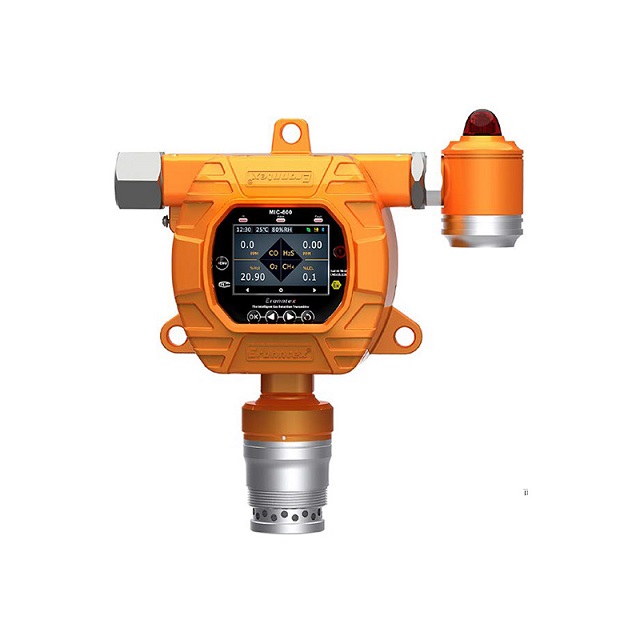- English
- Español
- Português
- русский
- Français
- 日本語
- Deutsch
- tiếng Việt
- Italiano
- Nederlands
- ภาษาไทย
- Polski
- 한국어
- Svenska
- magyar
- Malay
- বাংলা ভাষার
- Dansk
- Suomi
- हिन्दी
- Pilipino
- Türkçe
- Gaeilge
- العربية
- Indonesia
- Norsk
- تمل
- český
- ελληνικά
- український
- Javanese
- فارسی
- தமிழ்
- తెలుగు
- नेपाली
- Burmese
- български
- ລາວ
- Latine
- Қазақша
- Euskal
- Azərbaycan
- Slovenský jazyk
- Македонски
- Lietuvos
- Eesti Keel
- Română
- Slovenski
- मराठी
- Srpski језик
How should the calibration frequency of gas detectors be determined?
2025-04-28
The calibration frequency of gas detectors is a key factor in ensuring their accuracy and reliability, and is directly related to production safety, environmental protection, personnel health, etc. Determining the calibration frequency of gas detectors is not fixed, but requires comprehensive consideration based on multiple factors.
The following is an in-depth discussion of the method for determining the calibration frequency of gas detectors.
I. Frequency of use
High frequency use: If the gas detector is used frequently, such as more than a few hours a day, then its calibration cycle should be shortened accordingly. Because high frequency use may cause the instrument to drift or error more quickly, it needs to be calibrated more frequently.
Low frequency use: For gas detectors with low frequency of use, the calibration cycle can be appropriately extended. But even if the frequency of use is low, it should be ensured that calibration is performed at least once a year to maintain the accuracy of the instrument.
II. Environmental conditions
Harsh environment: If the gas detector is used in harsh environmental conditions, such as high temperature, high humidity, strong magnetic field, or an environment with a lot of dust and corrosive gases, then its calibration cycle should be shortened accordingly. These environmental factors may cause the instrument to degrade or malfunction more quickly.
Good environment: The calibration cycle of gas detectors used in relatively mild and stable environmental conditions can be appropriately extended.
III. Equipment quality and service life
Equipment quality: High-quality gas detectors usually have better stability and durability, so their calibration cycle can be appropriately extended. On the contrary, low-quality gas detectors may be more prone to errors and failures and require more frequent calibration.
Service life: As the service life increases, the performance of the gas detector may gradually decline. Therefore, for gas detectors with a longer service life, the calibration cycle should be appropriately shortened.
IV. Calibration methods and standards
Calibration methods: The calibration methods of gas detectors usually include zero calibration, range calibration, and comparison tests. When performing calibration, you should ensure that the correct methods and procedures are used and follow the manufacturer's guidelines and recommendations.
Standard gas: When performing calibration, standard gas that matches the concentration and properties of the gas to be measured should be used. The concentration and purity of the standard gas should be accurate and reliable to ensure the accuracy and reliability of the calibration.
V. National requirements and industry standards
National requirements: Some countries and regions may have clear regulatory requirements for the calibration cycle of gas detectors. Therefore, when determining the calibration frequency, you should ensure compliance with local regulations and standards.
Industry standards: Different industries may have different requirements for the accuracy and reliability of gas detectors. Therefore, when determining the calibration frequency, you should also consider the standards and requirements of your industry.
In summary, the calibration frequency of gas detectors should be considered comprehensively based on multiple factors such as frequency of use, environmental conditions, equipment quality and service life, as well as national requirements and industry standards. It is generally recommended to calibrate at least once a year, but in special circumstances (such as high-frequency use, harsh environment, etc.), more frequent calibration may be required. At the same time, the correct operating procedures and precautions need to be followed during the calibration process to ensure the accuracy and reliability of the calibration. Through scientific and reasonable calibration and maintenance work, it can ensure that the gas detector maintains high accuracy and stability in long-term use, providing strong protection for production safety, environmental protection and personnel health.








